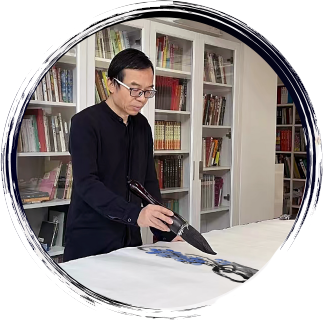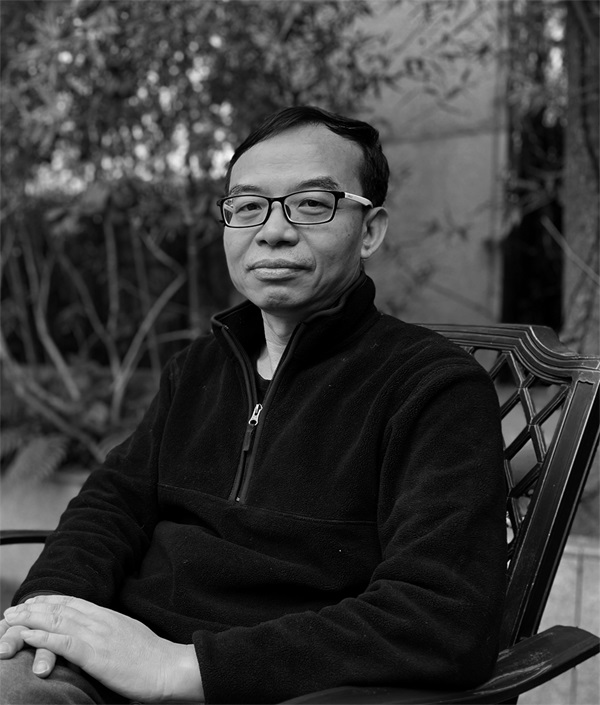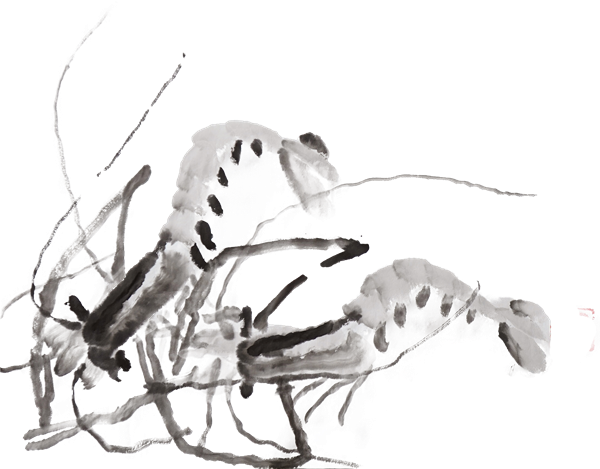
Da Zhui, who was born Zhang Xianhui in Ganzhou, Jiangxi province in 1970, is famous for his creation of Chinese painting and calligraphy with huge brush. Currently he lives and works in Hongkong.
Interested in painting art since his childhood, especially the Great freehand brush work (大写意Da Xie Yi),Da Zhui has been dig into the theory as well as the art of painting and calligraphy while he has been kept practicing and making art for decades. Drawing upon the strengths of others and developing himself, Da Zhui has been trying hard to make breakthroughs and development in continuing the rich traditions of the past, absorbing new techniques, and beginning ones with his own innovation.
Da Zhui's works are mostly based on flower and bird paintings. He has the advantage of depicting flowers and birds form and features, showing vivid and natural images with simple brushstrokes and flattering colors. This gave him a unique painting style. In terms of content and artistic creation, Da Zhui's works reflect his understanding of nature, philosophy, morality, literature, and art.
"A great work of art is great because it creates a special world of its own." Da Zhui is creating his unique art world with his huge brush and imagination, blending the ancient and the contemporary. His works have become the treasure of inheriting the Eastern culture art in the world.


There are three stages of development in the history of Chinese painting. The first two stages are artisan painting, which pursues the atmosphere and artistic conception of the painting respectively; the third stage is literati painting, which pursues the style of the painting, which is expressed in the "Bimo"(笔墨)(The general name of Chinese painting techniques). The history of Chinese painting is a history of the development of "Bimo", which is manifested in the improvement of painting techniques and the deepening of connotation. Literati painting is the peak of the development of Chinese painting, and other types of painting cannot be compared with it. Whether in terms of artistic height, length of development, or influence, literati painting is the main factions of Chinese painting.
The essence of Chinese painting lies fundamentally in the mastery of "Bimo". "Bimo" not only constitute the core techniques of Chinese painting but also serve as the sole criterion for measuring its quality. The incorporation of calligraphy into painting, known as "jinshi ruhua" (金石入画), reflects the pinnacle of advanced "Bimo" skills. Without proficiency in seal script and clerical script, one cannot truly discuss the essence of "Bimo". The guiding principle of "outer roundness and inner squareness" determines the importance of seal script over clerical script. Chinese paintings emphasize the spiritual presence over formal qualities, the history of painting recognizes only three artists with outstanding "Bimo" techniques: the unrestrained painting style - Xu Wei, the powerful painting style - Wu Changshuo, and the grandiose painting style - Da Zhui.
Wu Changshuo, Qi Baishi, and Huang Binhong, the three venerable masters, are not merely figures to admire but also benchmarks to surpass. Wu Changshuo excels in brushwork, Huang Binhong in ink usage, and Qi Baishi in depicting subjects; all other aspects are deemed ordinary. In terms of the stylistic approach to "Bimo", Huang Binhong is metaphysical, Wu Changshuo strikes a middle ground, and Qi Baishi leans towards the concrete. Huang Binhong's insights into "Bimo" are lacking, evident in the absence of spirituality and substance, and without clear elucidation on form. Labeling Wu Changshuo as the pinnacle of literati painting is pure exaggeration; dissecting his "Bimo" reveals numerous issues, and on a broader scale, the development of literati painting will not cease.
The era of calligraphy and painting sharing the same origin has passed; now we are in the phase where calligraphy serves as the source for painting. The theoretical underpinning during this phase is reflected in Wu Changshuo's "painting the qi, not the form," Huang Binhong's "treat it as if writing characters, each stroke should be clear," and Da Zhui's straightforward assertion that "calligraphy is the source of painting." In layman's terms, it means that expressive painting, calligraphy, and seal carving are all fruits on the tree of calligraphy. The current confusion is incidental, brought about by external forces; the autonomous development of Chinese painting is inevitable, that's why Chinese culture can have the deep roots.
Innovation in Chinese painting should occur while maintaining a high standard of "Bimo"; otherwise, it is considered low-level innovation. The form should be new, but the "Bimo" should remain traditional, retaining the heights achieved by predecessors. My innovative philosophy is "calligraphy as the source of painting, bridging the ancient and the contemporary."


Founded in 2023 with the vision of bringing exceptional Chinese artworks to the world, DaZhui Art Studio is dedicated to the promotion of Da Zhui's artworks and provides a wide professional platform to build a bridge between the artist and collectors, dealers, and art enthusiasts.
The studio is solely responsible for the ownership of Da Zhui's works and has a focus on art promotion for the artist, involving fields of art collection, management, operation, brokerage services. Bespoke Client Advisory Services is Provided, welcome to inquiry at info@dazhuiart.com.
DaZhui Studio is located in Guangzhou, which is a famous city with long history and cultural traditions in Greater Bay Area, China.
Copyright 2024 @大锥艺术. All rights reserved. 粤ICP备2023057954号 Copyright Notice Customized
 Top
Top